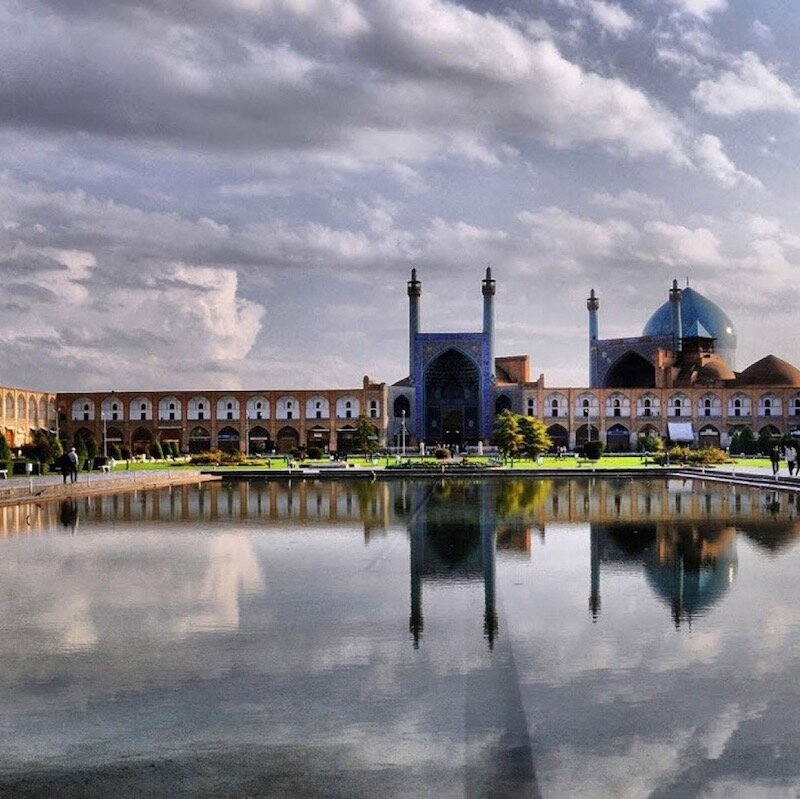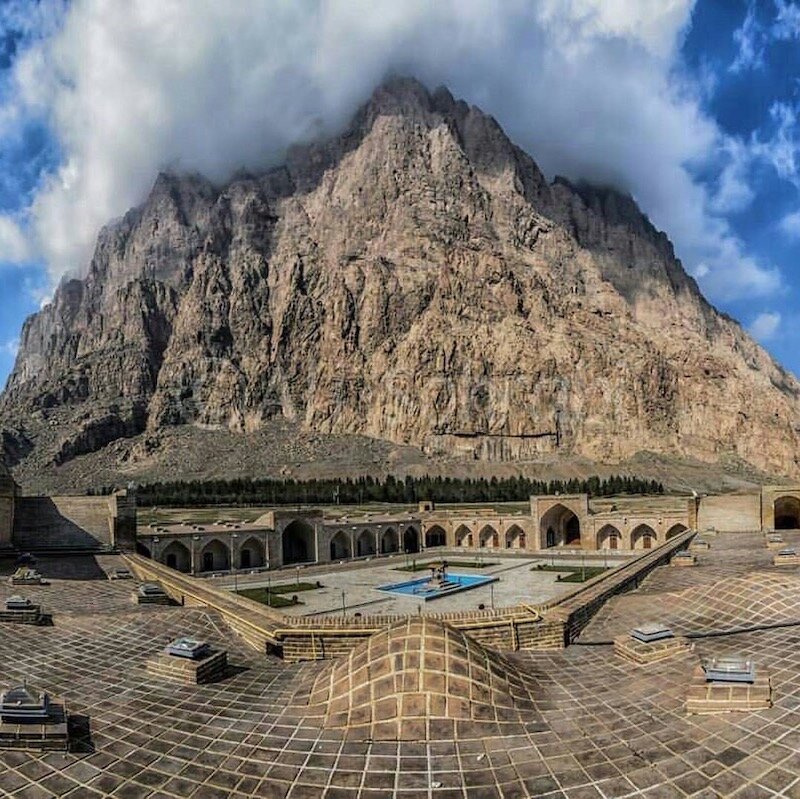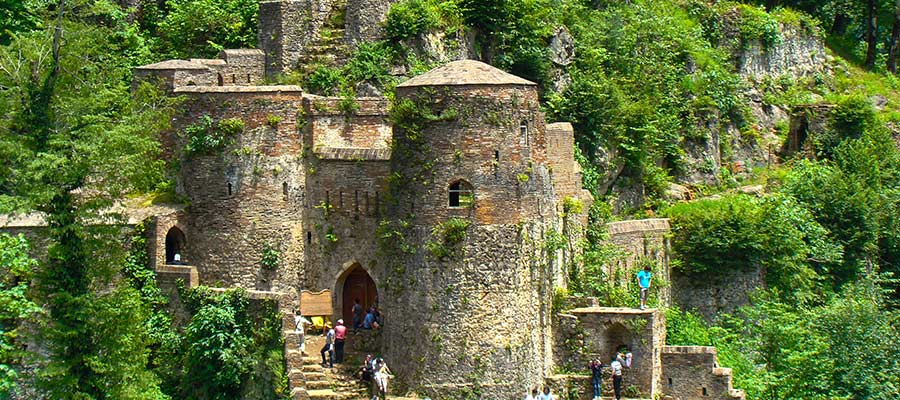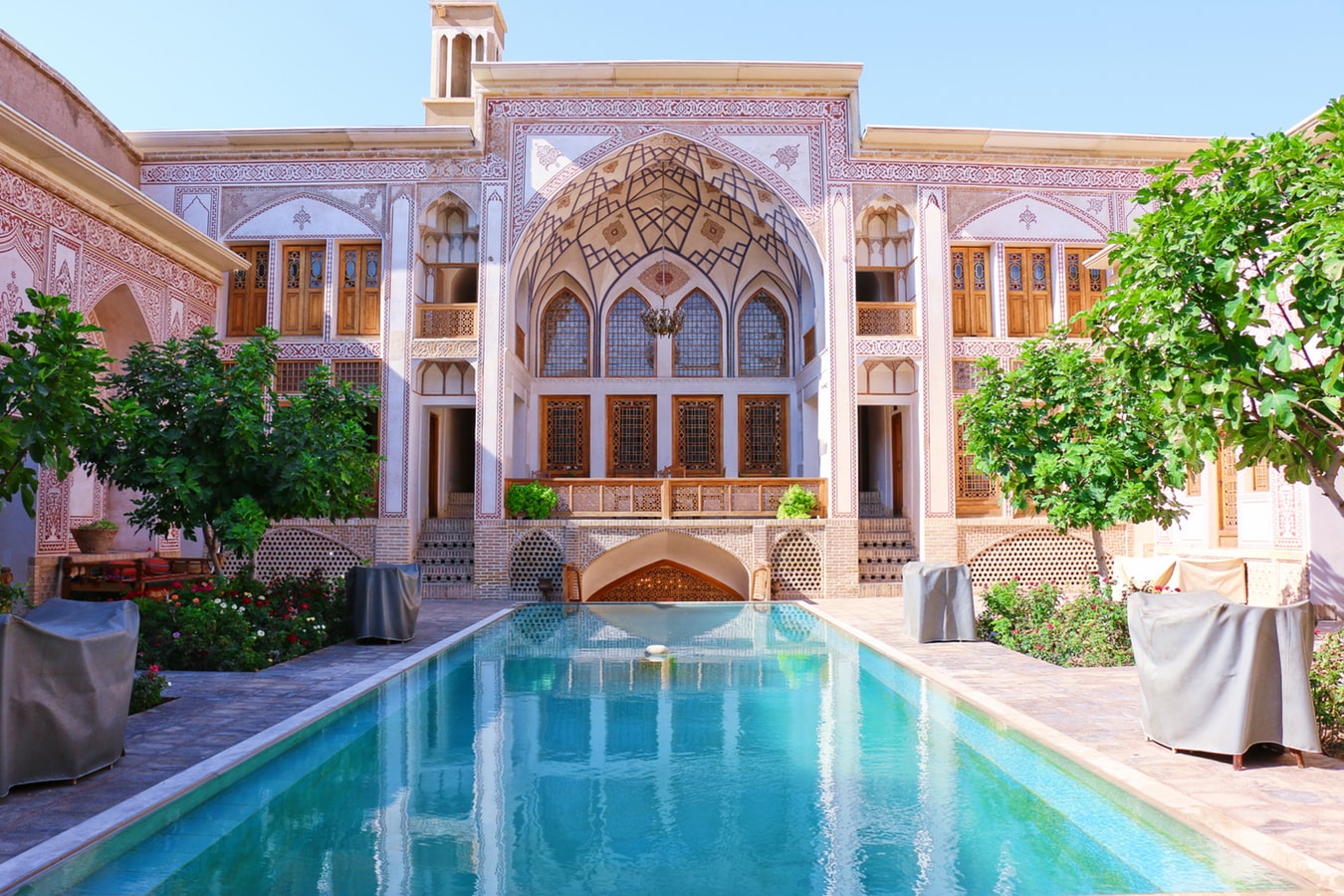Iran, also called Persia, and officially the Islamic Republic of Iran, is a country in Western Asia.The government of Iran is an Islamic theocracy that includes elements of a presidential democracy, with the ultimate authority vested in an autocratic “Supreme Leader”; a position held by Ali Khamenei since Khomeini’s death in 1989. The Iranian government is widely considered to be authoritarian, and has attracted widespread criticism for its significant constraints and abuses against human rights and civil liberties, including several violent suppressions of mass protests, unfair elections, and limited rights for women and for children. It is also a focal point for Shia Islam within the Middle East, countering the long-existing Arab and Sunni hegemony within the region. Since the Iranian Revolution, the country is widely considered to be the largest adversary of Israel and also of Saudi Arabia. Iran is also considered to be one of the biggest players within Middle Eastern affairs, with its government being involved both directly and indirectly in the majority of modern Middle Eastern conflicts.
Iran is a regional and middle power, with a geopolitically strategic location in the Asian continent. It is a founding member of the United Nations, the ECO, the OIC, and the OPEC. It has large reserves of fossil fuels—including the second-largest natural gas supply and the fourth-largest proven oil reserves. The country’s rich cultural legacy is reflected in part by its 26 UNESCO World Heritage Sites. Historically a multi-ethnic country, Iran remains a pluralistic society comprising numerous ethnic, linguistic, and religious groups, with the largest of these being Persians, Azeris, Kurds, Mazandaranis, and Lurs.
1.Naghshe- e Jahan Square, Isfahan

Naqsh-e Jahan Square, also known as the Shah Square prior to 1979, is a square situated at the center of Isfahan, Iran. Constructed between 1598 and 1629, it is now an important historical site, and one of UNESCO’s World Heritage Sites. It is 160 metres wide by 560 metres long.
The Maidan was where the Shah and the people met. Built as a two-story row of shops, flanked by impressive architecture, and eventually leading up to the northern end, where the Imperial Bazaar was situated, the square was a busy arena of entertainment and business, exchanged between people from all corners of the world. As Isfahan was a vital stop along the Silk Road, goods from many countries of the world, spanning from Portugal in the West, to the Middle Kingdom in the East, found its ways to the hands of gifted merchants, who knew how to make the best profits out of them.
The Royal Square was also admired by Europeans who visited Isfahan during Shah Abbas’ reign. Pietro Della Valle conceded that it outshone the Piazza Navona in his native Rome.
During the day, much of the square was occupied by the tents and stalls of tradesmen, who paid a weekly rental to the government. There were also entertainers and actors. For the hungry, there were readily available cooked foods or slices of melon, while cups of water were handed out for free by water-carriers paid for by the shop-keepers. At the entrance to the Imperial Bazaar, there were coffee-houses, where people could relax over a cup of fresh coffee and a water-pipe. These shops can still be found today, although the drink in fashion for the past century has been tea, rather than coffee. At dusk, the shop-keepers packed up, and the huzz and buzz of tradesmen and eager shoppers bargaining over the prices of goods would be given over to dervishes, mummers, jugglers, puppet-players, acrobats and prostitutes.
Every now and then the square would be cleared off for public ceremonies and festivities. One such occasion would be the annual event of Nowruz, the Persian New Year. Also, the national Persian sport of polo could be played in the maidan, providing the Shah, residing in the Ali Qapu palace, and the busy shoppers with some entertainment. The marble goal-posts, erected by Shah Abbas, still stand at either end of the Maydan.
Under Abbas, Isfahan became a very cosmopolitan city, with a resident population of Turks, Georgians, Armenians, Indians, Chinese and a growing number of Europeans. Shah Abbas brought in some 300 Chinese artisans to work in the royal workshops and to teach the art of porcelain-making. The Indians were present in very large numbers, housed in the many caravanserais that were dedicated to them, and they mainly worked as merchants and money-changers. The Europeans were there as merchants, Roman Catholic missionaries, artists and craftsmen. Even soldiers, usually with expertise in artillery, would make the journey from Europe to Persia to make a living. The Portuguese ambassador, De Gouvea, once stated that:
“The people of Isfahan are very open in their dealings with foreigners, having to deal every day with people of several other nations.
2.Bisotun

Bisotun is a city and capital of Bisotun District, in Harsin County, Kermanshah Province, Iran. At the 2006 census, its population was 2,075, in 527 families. The town is at the foot of Bisotun mountain, the flank of which is the location of an important historical site.
Bisotun is located along the ancient trade route linking the Iranian high plateau with Mesopotamia and features remains from the prehistoric times. The principal monument of this archaeological site is the bas-relief and cuneiform inscription ordered by Darrius I, when he rose the throne of the Persian Empire. The sculpture portrays Darrius holding a bow, a sign of dominance, and treading on the chest of a figure who lies on his back before him. According to legend, the figure represents Guamate, the Median Magus, and pretender to the throne, whose assassination led to Darrius’ rise to power. On the sacred mountain of Bisotun in Western Iran is a remarkable multilingual inscription carved on a limestone cliff about 60 meters above the plain. Bisotun is an outstanding testimony to the important interchange of human values on the development of monumental art and writing.
The imperial road from Ekbatana to Babylon passed at the foot of the mountain. On the rocky slopes king Darius I left the Behistun Inscription. From the Seleucid epoch there is a Herakles statue. Next to it Parthian kings added some reliefs. Late Sasanian rulers prepared a large piece of rock for another victory relief which was never finished because of the subsequent Arab invasion.[citation needed] Later folklore connected this place to the legend of Farhad and Shirin.
A Safavid caravanserai is preserved in Bisotun.
3.Shah Cheragh, Shiraz

Shāh Chérāgh is a funerary monument and mosque in Shiraz, Iran, housing the tomb of the brothers Ahmad and Muhammad, sons of Mūsā al-Kādhim and brothers of ‘Alī ar-Ridhā. The two took refuge in the city during the Abbasid persecution of Shia Muslims. Shāh-é-Chérāgh is Persian for “King of the Light”.
The site is the most important place of pilgrimage within the city of Shiraz. Ahmad came to Shiraz at the beginning of the third Islamic century (approximately 900 AD), and died there. During the rule of Abu Bakr ibn Sa’d (r. 1226–1260) of the Salghurid dynasty, the chief minister to the monarch by the name of Amir Muqarrab al-Din Mas’ud built the tomb chamber, the dome, as well as a colonnaded porch. The mosque remained this way for roughly 100 years before further work was initiated by Queen Tash Khātūn (the mother of Shāh Abū Ishāq Injū) during the years 1344-1349 (745-750 AH). She carried out essential repairs, constructed an edifice, a hall of audience, a fine college, and a tomb for herself on the south side. She also presented a unique Qur’an of thirty volumes, written in golden thuluth characters with gold decoration, in the style of the calligraphist of that period, Yahya Jamali. The date written on the Qur’an indicates that they were written from 1344-1345 (754-746 AH). Nothing now remains of the buildings set up by Queen Tash Khātūn, but the Qur’ans have remained and are preserved in the Pars Museum.
The decorative work in a mosaic of mirror glass, the inscriptions in stucco, the ornamentation, the doors covered with panels of silver, the portico, and the wide courtyard are most attractive. The tomb, with its latticed railing, is in an alcove between the space beneath the dome and the mosque. And this custom of placing the tomb in this position, so that it is not directly under the dome, is to be seen in other famous places of pilgrimage in the city of Shiraz, and may be considered a special feature of Shiraz shrines. Two short minarets, situated at each end of the columned portico, add impressiveness to the Mausoleum, and to the spacious courtyard, which surrounds it on three sides. The Shah-e-Cheragh Mausoleum was registered on 10 February 1940, under No. 363 in the list of the national monuments of Iran.
Rated by many travellers as the most beautiful mosque in the world. The shrine was popularised in the West when in October 1976, Interview magazine published a Firooz Zahedi photo shoot of Elizabeth Taylor as a cover story.
4.Jame Mosque, Yazd

The Jāmeh Mosque of Yazd is the grand, congregational mosque of Yazd city, within the Yazd Province of Iran. The mosque is depicted on the obverse of the Iranian 200 rials banknote.
The 14th-century mosque is still in use today. It was first built under Ala’oddoleh Garshasb of the Al-e Bouyeh dynasty. The mosque was largely rebuilt between 1324 and 1365, and is one of the outstanding 14th century buildings of Iran.
According to the historians, the mosque was constructed in the site of the Sassanid fire temple and Ala’oddoleh Garshasb commenced building the mosque. The previous mosque was constructed by order of Ala’oddoleh Kalanjar in 6th century A.H., however the main construction of the present building was done by order of “Seyyed Rokn al-Din Mohammad Qazi”
Looking up to find the top part of the tallest entrance in the world, you feel it’s time to dive into the beauty. Jame Mosques of Yazd is truly a treasure in the heart of the city. Blue tiling has made this mosque a fantastic building in which calmness surrounds you. To get to the
Jame Mosque, you can easily pick a road in the old part of the town, and the end of your walking tour would be the Jame Mosque. Narrow alleys and streets, old-style houses, and huge Wind Catchers would be the surprise part of your journey through the old district. The best thing about the old part of Yazd is getting lost in the old neighborhood and try no to find the way out of there. Wandering around this part gives you the chance to meet locals and their rare lifestyle deep inside the city. Don’t worry about getting lost. You will always end up seeing the entrance of the Jame mosque.
5.Fin Garden, Kashan

Fin Garden located in Kashan, Iran, is a historical Persian garden. It contains Kashan’s Fin Bath, where Amir Kabir, the Qajarid chancellor, was murdered by an assassin sent by King Nasereddin Shah in 1852. Completed in 1590, the Fin Garden is the oldest extant garden in Iran.
The origins of the garden may be anterior to the Safavid period; some sources indicate that the garden has been relocated from another place, but no clear picture of it has been found.
The settlements of the garden in its present form was built under the reign of Abbas I of Persia (1571-1629), as a traditional bagh near the village of Fin, located a few kilometres southwest of Kashan.
The garden was developed further during the Safavid dynasty, until Abbas II of Persia (1633-1666). It was highly recognized during the reign of Fat′h Ali Shah Qajar and was considerably expanded.
The garden subsequently suffered from neglect and was damaged several times until, in 1935, it was listed as a national property of Iran. On 2007, 8 September, Bagh-e Fin was submitted to the UNESCO’s Tentative List.
Unesco declared the garden a World Heritage Site on July 18, 2012.
The garden covers 2.3 hectares with a main yard surrounded by ramparts with four circular towers. In keeping with many of the Persian gardens of this era, the Fin Garden employs a great many water features.
These were fed from a spring on a hillside behind the garden, and the water pressure was such that a large number of circulating pools and fountains could be constructed without the need for mechanical pumps.
The garden contains numerous cypress trees and combines architectural features of the Safavid, Zandiyeh and Qajar periods.
6.Shushtar Historical Hydraulic System

The Shushtar Historical Hydraulic System is a complex irrigation system of the island city Shushtar from the Sassanid era. It consists of 13 dams, bridges, canals and structures which work together as a hydraulic system. Located in Iran’s Khuzestan Province.
Shushtar infrastructure included water mills, dams, tunnels, and canals. Gargar Bridge-Dam was built on the watermills and waterfalls. Bolayti canal is situated on the eastern side of the water mills and water falls and functions to supply water from behind the GarGar bridge to the east side of water mills and channel the water to prevent damage to the water mills. Dahaneye shahr tunnel (city orifice) is one of the three main tunnels which channeled the water from behind the Gargar Bridge-Dam into the water mill and then run several water mills. Seh kooreh canal channels the water from behind the GarGar bridge into the western side. In the water mills and water falls, we can see a perfect model of haltering to run mills.
The Band-e Kaisar (“Caesar’s dam”), an approximately 500-metre (1,600 ft) long Roman weir across the Karun, was the key structure of the complex which, along with the Mizan Dam (Band-e Mizan), retained and diverted river water into the irrigation canals in the area. Built by a Roman workforce in the 3rd century AD on Sassanid order, it was the most eastern Roman bridge and Roman damand the first structure in Iran to combine a bridge with a dam.
Parts of the irrigation system are said to originally date to the time of Darius the Great, an Achaemenian king of Iran. It partly consists of a pair of primary diversion canals in the Karun river, one of which is still in use today. It delivers water to the Shushtar city via a route of supplying tunnels. The area includes Salasel Castle, which is the axis for operation of the hydraulic system. It also consists of a tower for water level measurement, along with bridges, dams, mills, and basins.
Then it enters the plain south of the city, where its impact includes enabling the possibility of farming over the area called Mianâb and planting orchards. In fact the whole area between the two diversion canals (Shutayt and Gargar) on Karun river is called Mianâb, an island having the Shushtar city at its northern end.
The site has been referred to as “a masterpiece of creative genius” by UNESCO.
7.Roudkhan castle, Gilan

Rudkhan Castle; also Roodkhan Castle, is a brick and stone medieval fortress in Iran that was built by the Talysh people to defend against the Arab invaders during the Muslim conquest of Persia.
Located 25 km southwest of Fuman city north of Iran in Gilan province, it is a military complex which was constructed during the Sasanian era (224-651), and later rebuilt in 1096 by the Nizari Isma’ilis for use by the Assassins. The castle is built on two tips of a mount, with an area of 2.6 hectares (6.4 acres). Its architects made use of natural mountainous features in the construction of the fort.
The Rudkhan Castle River originates in the surrounding heights and flows from south to north.
After crossing a mountainous winding route with dense forests, the first thing that one notices about the castle is its big entrance gate.
Rudkhan Castle sits at the two peaks of a mountain at elevations of 715 and 670 metres and contains strong fortifications and battlements at a length of 1,550 metres. The castle’s 42 towers still stand intact.
Rudkhan Castle, also Roodkhan Castle, is a brick and stone medieval fortress in Iran built by the Gilaks to defend against the Arab invaders during the Arab/Islamic invasion of Sassanian Iran. Located north of Iran in Gilan province, as one of the most breathtaking tourist attraction sites in Iran, The castle is built on two tips of the amount. After crossing a mountainous winding route with dense forests, the first thing that visitors notice about this mountain castle, which is embedded in the green forest that overgrows its walls and courtyards, is its big entrance gate and The castle’s 42 towers that still stand intact. What makes this castle one of the main tourist attractions sites in Iran is that sightseers can roam the historical castle with a fantastic view worldwide for hours at the path. At the foot of the court, there are plenty of places that tourists can eat or buy various souvenirs from. The Rudkhan Castle River, which originates in the surrounding heights and flows from south to North, adds to the scenery’s beauty.










